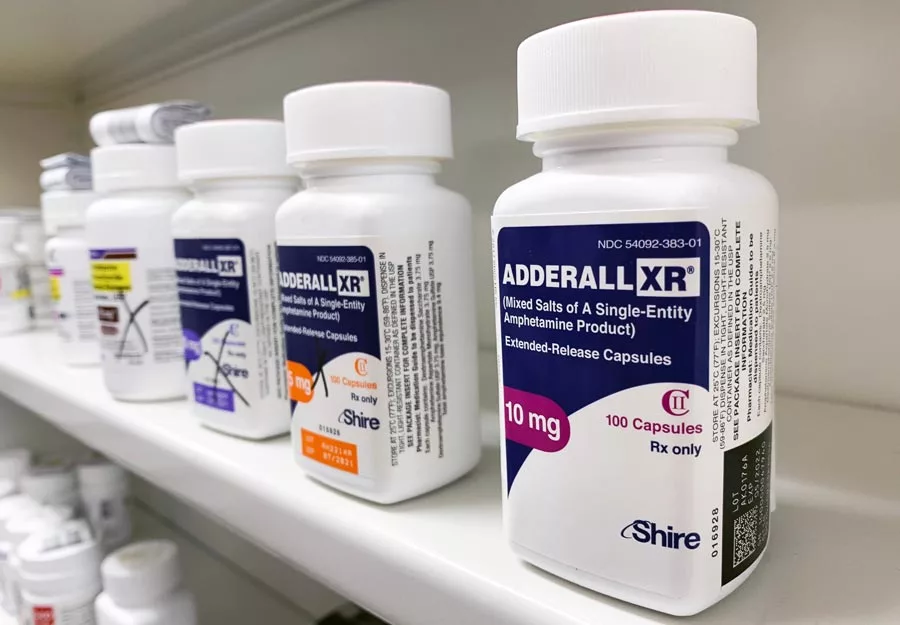What Are the Most Common Stimulant Drugs?
The word “stimulants” describes a category of drugs and substances that affect the body and mind in unique ways. Within this broad classification, there are several further sub-categories. Prescription stimulants are frequently prescribed to persons for legitimate medical reasons by licensed and certified medical practitioners. It is considered unlawful to possess those substances within this category without a valid license (e.g., a prescription). Common examples of some of these are Adderall, Ritalin, and Methylphenidate. These substances are used for treating conditions like ADHD.
Then, some stimulants drug are outright banned and illegal. These substances cannot be prescribed medically, are strictly controlled, and carry heavy penalties. Examples of these drugs are cocaine, methamphetamines, and MDMA.
Finally, some substances aren’t controlled and can be possessed and consumed by anyone. Substances like caffeine (commonly found in coffee and sodas) and nicotine (in cigarettes and vape liquids). Caffeine isn’t a controlled substance, but cigarettes and vape products aren’t legally accessible to persons under the age of 18.
What Are the General Effects Of Stimulant Substances?
One of the essential things to know about stimulants is that they are addictive, habit-forming substances. The mind and body become dependent on them over time and start to, in a sense, “need” them to function. You might be asking, “How does this work?” In general, all stimulants operate via the same principle, and thus, all have pretty similar effects on the brain. Stimulants trigger an increase of dopamine in our brains. Dopamine is a chemical that acts as a “feel-good messenger.” What does that mean? Motivation, focus, mood, and decision-making are aspects of the human experience dictated and influenced heavily by dopamine levels. Dopamine runs our brains’ pleasure and reward centers, so persons consuming stimulants experience elevation to better moods, more motivation, focus, and more.
The only significant difference in the general effect stimulants have across the different categories is the increased degree to which dopamine is released. Coffee and nicotine have probably the mildest effect of them all, whereas outright illegal substances result in excessive dopamine levels in the brain. Controlled and prescribed substances like Methylphenidate are designed to help persons with ADHD. They have difficulty naturally producing dopamine to become more functional closer to a neurotypical experience. Prescribers monitor the usage of the substance in medical cases until the desired result is achieved. Misuse of these substances leads to a buildup and tolerance in the system, leading to higher and higher dosages and deeper addiction.
What are the Side Effects of Stimulant Abuse And Dependence?
One experiences many side effects due to the misuse and abuse of stimulant substances. These side effects can be experienced both within the immediate and short-term and over the long-term. Remember that one can experience adverse side effects from all stimulant substances. (Overconsumption of coffee, for instance, will undoubtedly lead to negative impacts). It’s also important to note that the body’s dependence on stimulants will result in withdrawal symptoms when deprived of said stimulant. The short-term side effects of usage and withdrawal can coincide with significantly more uncomfortable withdrawal symptoms. With illegal, banned or misuse of prescription substances even, the side effects will be much more pronounced.
Short term side effects can range from:
- High blood pressure
- Excessive sweating
- Elevated heart rate and breathing
- Irregular heartbeat
- Elevated body temperature
- Vomiting
- Poor diet
- Nausea

Long-term side effects of stimulant abuse are even more concerning because, depending on the severity, the misuse can have far-reaching consequences for the person many years later. Some examples of long-term side effects are:
- Anxiety
- Depression
- Psychosis
- Blood vessel damage
- Kidney damage
- Lung damage
- Elevated stroke risk
- Elevated heart failure risk
How Can I Tell the Signs Of Stimulant Abuse?
Nobody wants to lose a loved one to the spiral of addiction. It is a destructive habit that can harm and even destroy the lives of everyone touched by it. That is why recognizing the signs of any form of stimulant misuse is so vital. Often, the best way to discern that someone may be misusing stimulants would be to look for critical behavioral changes. KEEP IN MIND that not all behavioral changes are a surefire sign of stimulant abuse! Mental health issues like depression can cause behavioral changes. It is also essential to keep in mind that accusing someone of being a drug addict is never the way to address it.
At best, your hunch is correct, and the person will double down on their attempts to hide the habit from you. At worst, your hunch is wrong, and you have now caused psychological and emotional damage to a person already in a place of struggling. Suppose you suspect someone has a stimulant abuse issue. In that case, the cornerstone of all efforts should be free of judgment and full of empathy and care and the engagement of professional sources on how to handle it tactfully.
That being said, here are some of the more common behavioral changes that someone may be misusing stimulants:
- You come to discover that they are stealing or forging prescriptions.
- They are taking doses higher than prescribed without authorization.
- They become easily hostile and experience excessive mood swings.
- Their sleep habits have changed, either increasing or decreasing in amount.
- Decision-making is uncharacteristically erratic.
- Overall personality changes (overly euphoric/energetic/sedated).
Is Stimulant Abuse Dangerous?
Addiction to stimulants can be dangerous. For some people, it is even fatal. The recent overdose deaths of two Arizona college students who were sold counterfeit Adderall (laced with meth) highlights yet another danger of this class of drugs.
It should not be underestimated just how profound, tragic and aggressive a situation it can descend into. Everyone is urged to exercise caution with any types of controlled substances, stay away from illegal stimulants, and be measured and moderate with the usage of caffeine and nicotine in general.
Does Stimulant Abuse Cause Withdrawal Symptoms?
In short, yes. This was discussed in detail above, but in essence, stimulants are addictive substances. As a result, the body experiences a withdrawal phase when deprived of it. This phase can include experiencing symptoms like fever, nausea and vomiting, light sensitivity, stomach pains, cramps, muscular pain, excessive sweating, and hallucinations, to name a few.
Finding Help for Stimulant Abuse is Possible
If you or a loved one are experiencing an addiction to stimulant substances and would like to regain control, autonomy, and agency over your life, there is hope. When it comes to stimulant abuse and treatment, a proper healthcare provider with programs specifically formulated and focused on rehabilitating persons experiencing substance use disorder is critical. The internet is usually an excellent tool for finding quality options.
For instance, a quick Google search for “Colorado stimulant addiction treatment centers” yields a wealth of information. By researching the history, success stories, and reputation of a facility, you can usually discern the general quality of care one can expect. Some factors to keep an eye out for when considering a facility or program are the qualifications of the staff, the accreditation status of the facility, the extent of their financing options, as well as whether or not they take each patient as a unique individual that not only deserves but requires a bespoke plan of treatment to ensure the highest chance of lasting sobriety. A good rule of thumb is that an exceptional facility will usually have a reputation that precedes it.
What are the Features Of Treatment for Stimulant Addiction?

Stimulant addiction is a condition that requires a multi-stage, bespoke plan of action. Each person is unique. Their experience of addiction is unique, as are the specific circumstances and factors that led them to fall into the habit in the first place. For this reason, a good facility will work to figure out just how each phase of treatment should be handled for each person. There are, however, some broad stages that the treatment of stimulant abuse travels through:
- Detoxification – When the body is deprived of the substance, it will invariably rebel. This phase is painful and uncomfortable and requires clinical staff and observation to reduce discomfort as much as possible.
- Medication-Assisted-Treatment (MAT) – A combination of therapy and medication, MAT is used by pairing FDA-approved drugs that have been proven to help people overcome addiction. This can be cautiously employed on a case-by-case basis, depending on the severity and nature of the case.
- Dual-Diagnosis Programs – Addiction is often one of the conditions a patient may be suffering from. Things like anxiety and depression may also be playing their roles in their pain. The addiction itself may be a symptom or result of the initial condition that the patient fell into due to trying to self-medicate. A good facility will be aware of this possibility and screen for it in their initial consultation.
- Inpatient Care – Depending on the severity of the case, the patient may need to stay at the facility around the clock to be monitored, administered therapy, and other treatments deemed necessary for holistic recovery. Inpatient care can be expensive, but it has a very high success rate. Patients that undergo inpatient care are kept away from negative influences in the outside world until they can deal with them.
- Outpatient Care – For cases less severe or severe cases that have de-escalated sufficiently, outpatient care may be the move. This involves the patient coming into the facility on a scheduled basis for treatment sessions as appropriate but not residing at the facility. Outpatient care is typically less costly than inpatient care. The downside is that patients are constantly exposed to the same stimuli that led them into addiction in the first place.
- Aftercare – Don’t make the mistake of considering aftercare an afterthought. This is a critical, non-optional part of lasting recovery. This element involves many components such as skill-building, group therapy, community support, and more. This phase focuses on bolstering and sustaining the patient’s sobriety as they step into a new life free of the substance’s hold over them.
Find Lasting Recovery from Stimulant Addiction at Best Rehabs In Arizona
We have over 20 years of expert experience in treating and rehabilitating persons struggling with addiction and stimulant abuse issues. Our facility is staffed by full-service teams comprised of qualified, expert medical and holistic care professionals who are ready and willing to work with you as you navigate the entire process of recovery and rehabilitation; from detoxing to healing from the psychological trauma that likely caused the addiction, to the critical Aftercare process that empowers our patients and prepares them for life on the other side of substance dependency.
A happy, fulfilling, and engaging life is our ultimate goal for every person that walks through our doors, and we have the track record to back that up! If you or someone you love is struggling with an addiction to stimulants, know that hope exists. Contact us today for more information or a consultation!

